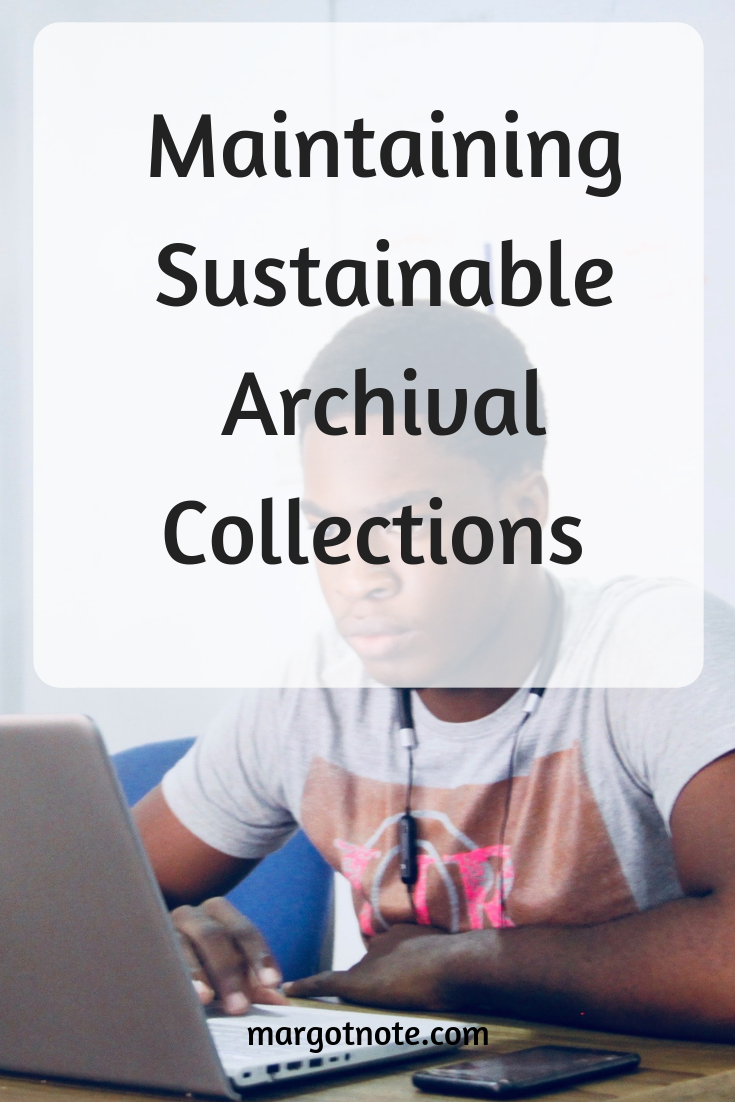The role of archivists has significantly changed with the rise of digitized and born-digital collections.
In the past, we waited at the end of the records lifecycle, acquiring physical records that had reached the end of their everyday use and had transitioned into having enduring historical value. With the advent of digital files, archivists have had to meet the creators of records much sooner in the lifecycle, offering advice on how to maintain digital records that will be sustainable over time.
Small Steps are Still Progress
Educating the creators of records is challenging because of the complexity of digital preservation, as well as being able to articulate the need for steps we can take to make digital records last longer. Unfortunately, most of what is being acquired by archives today is far from being preservation ready. Archivists can be overwhelmed by what we need to do to make records usable in the future; records creators are even more so. However, we can’t let those feelings cause inaction. Even the smallest steps towards sustainability help archival collections.
Key Activities
Here are some digital preservation guidelines for making digital records last longer:
Use short, descriptive file names with no spaces and no punctuation except for hyphens and underscores. Files names will help you find content easier and make it usable on different types of operating systems.
If saving multiple versions, use a consistent method of documenting the version number, such as adding a date (in the form YYYY-MM-DD) or version number (v1, v2) to the file name.
When possible, embed metadata into the file. Crucial information includes the date of creation, creator name, contact information, keywords or description, and any rights restrictions. You can use programs to batch embed the metadata.
Develop a systematic method of organizing your files and folders. Suggest to your creators on how best to organize content based on their needs.
If saving files in PDF form, save as PDF/A whenever possible. Even if the PDF/A cannot capture all the information in your documents, keeping a version of the file in this format will ensure that some of the work will survive.
Create images, audio, and video in the highest quality available and save in uncompressed or lossless compression formats. For example, high-resolution TIFF files should be master files for images, with a smaller JPEG created for access files.
In documenting how people should use the work, assign Creative Commons licenses. You will also have to educate your creators and users on how your institution uses copyright to preserve your content and, more importantly, how it is shared among users.
If creating databases, export snapshots in CSV format and document what each table and field mean, and how they interrelate. Document your decisions so that users in the future can better understand the data that you are trying to preserve.
Use regular backup and storage systems, preferably multiple copies in different locations. Don’t depend on external media like DVDs, CDs, and flash drives because they aren’t preservation media.
Choose open-source software, such as OpenOffice, instead of proprietary software, such as Microsoft Word, whenever possible. Admittedly, for many people and institutions, this guideline may be hard to implement because people become attached to specific software programs. However, consider installing open-source applications whenever you can.
Develop a systematic method of organizing files and folders. Suggest to your creators how best to organize content based on their needs.
Preparing Digital Records for Future Records
As you work with content creators, become familiar with their work, their audiences, and the need for long-term digital preservation involved. By taking proactive steps with creators to prepare their materials for future use, you’re doing a service to the creators, digital curators, and researchers and educators in the future. You will also save time, money, and resources for your archives department and potentially preserve vital information that, in other circumstances, may have been corrupted or destroyed.
The blog was originally published on Lucidea's blog.































